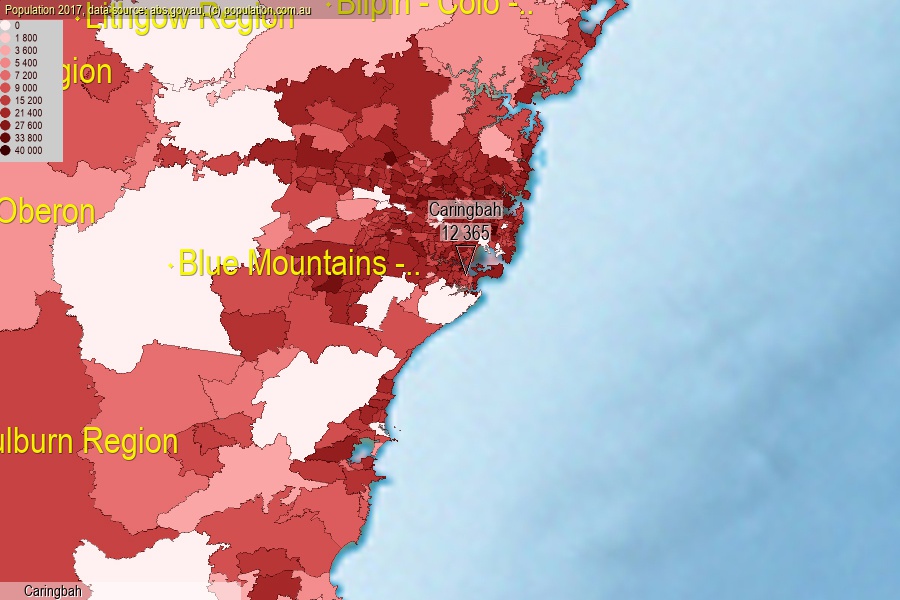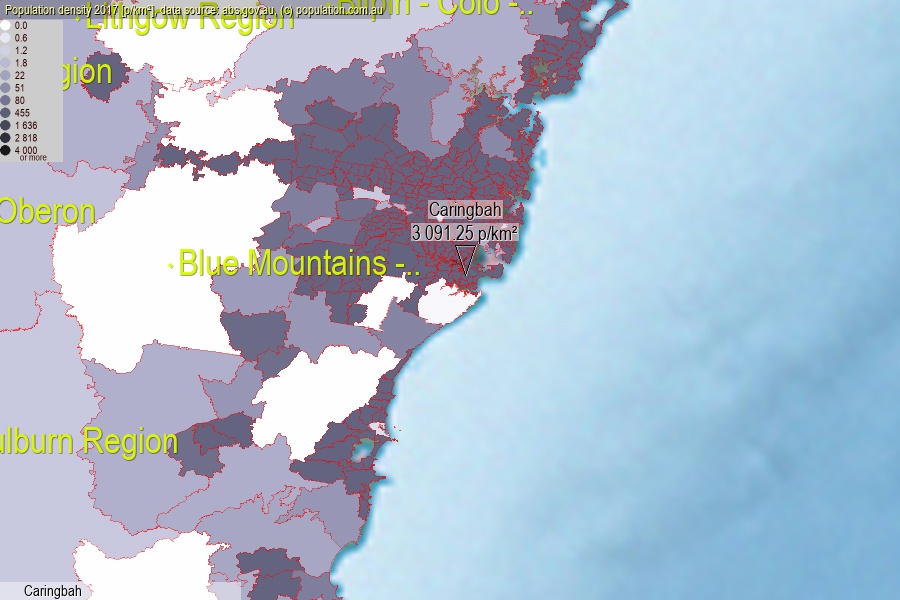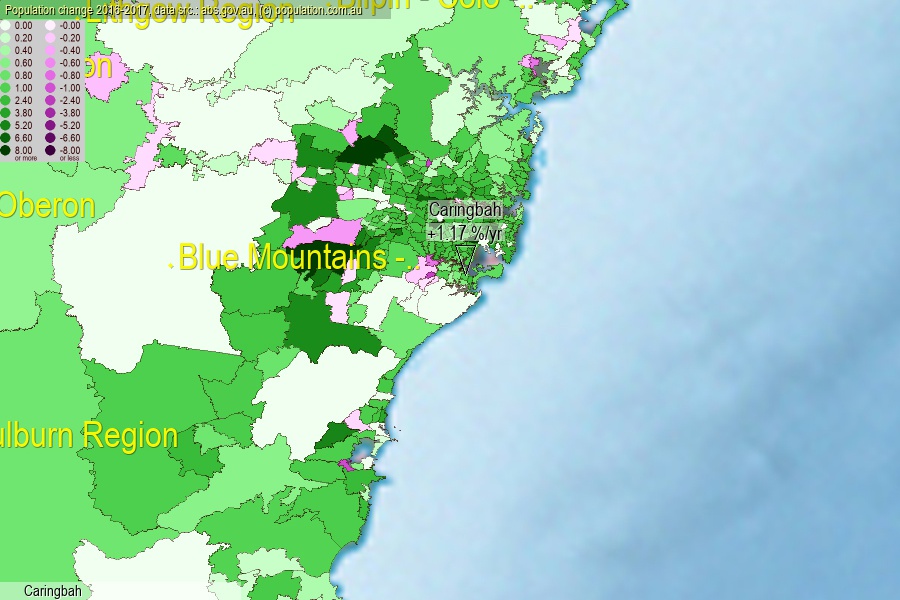 population.com.au
population.com.auLast official estimated population of Caringbah (as Statistical Area Level 2) was 12 365 people (on 2017-06-30)[2]. This was 0.05% of total Australian population and 0.155% of NSW population. Area of Caringbah is 4.00 km², in this year population density was 3 091.25 p/km² . If population growth rate would be same as in period 2016-2017 (+1.17%/yr), Caringbah population in 2025 would be 13 571. [0]



Click to enlarge. Caringbah is located in the center of the images.
Population [people], population density [p./km²] and population change [%/year] [2]
View borders » (new window) [4]
[2001-2002] +1.81 %/Yr.
[2002-2003] +1.27 %/Yr.
[2003-2004] +1.14 %/Yr.
[2004-2005] +1.25 %/Yr.
[2005-2006] +0.82 %/Yr.
[2006-2007] +1.49 %/Yr.
[2007-2008] +2.51 %/Yr.
[2008-2009] +3.41 %/Yr.
[2009-2010] +2.07 %/Yr.
[2010-2011] +1.15 %/Yr.
[2011-2012] +1.09 %/Yr.
[2012-2013] +1.50 %/Yr.
[2013-2014] +1.40 %/Yr.
[2014-2015] +1.32 %/Yr.
[2015-2016] +1.29 %/Yr.
[2016-2017] +1.17 %/Yr.
[0] Calculated with linear interpolation from officially estimated population
[1] Read more about SA2 and Australian Statistical Geography Standard (ASGS) on abs.gov.au
[2] Population data from Australian Bureau of Statistics (Population and density: 2017; change: 2016-2017)
[3] Digital Boundaries: Australian Statistical Geography Standard (ASGS) 2016.
[4] Border coordinates are simplifyed using Ramer-Douglas-Peucker algorithm.